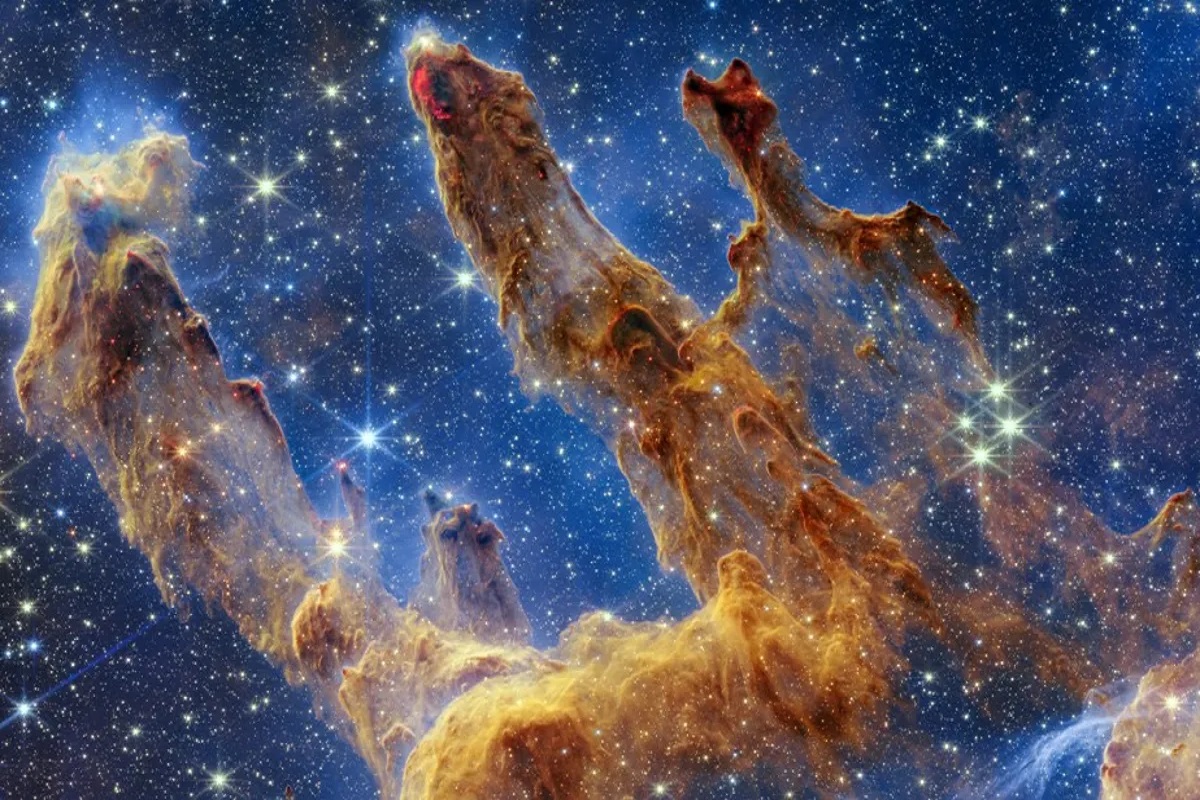NASA, SpaceX examining ways to increase Hubble telescope orbit
Elon Musk's SpaceX intends to fund research with NASA to increase the...

Famous Pillars of Creation are captured by the James Webb Telescope
According to NASA, the enormous pillars of gas and dust packed with stars known as the Pillars of Creation have been photographed by the largest and most potent satellite telescope in the world.
The massive columns of gold, copper, and brown that stand within the expansive Eagle Nebula, 6,500 light years from Earth, have been captured in the first image by the James Webb Space Telescope, according to a statement released by the US space agency on Wednesday.
The Pillars were initially photographed by NASA’s Hubble Space Telescope in 1995.
Webb, a more recent telescope that was sent into orbit less than a year ago, can see through the Pillars’ obscurity to see young stars emerging because of its infrared capabilities.
Bright red, lava-like patches can be seen at the extremities of numerous Pillars in the Webb photos. NASA stated that they are ejections from young stars that are only a few hundred thousand years old.
It went on to say that these “young stars periodically fire out supersonic jets that crash with clouds of matter, resembling these thick pillars.”
The Space Telescope Science Institute’s (STScI) Klaus Pontoppidan stated on Twitter that “by popular demand, we had to do the Pillars of Creation.”
Webb is run by STScI out of Baltimore, Maryland.
There are simply a ton of stars! Added Pontoppidan.
Space scientist Amber Straughn succinctly put it this way on Twitter: “The universe is gorgeous!”
The image was captured by Webb’s primary imager, NIRCam, which measures near-infrared wavelengths that are undetectable to the human eye and covers a radius of nearly eight light years.
Visible light has been used to “transform” the image’s colors.
The new image, according to NASA, “will aid researchers in revising their models of star formation by detecting far more precise counts of freshly created stars, as well as the quantities of gas and dust in the region.”
Additionally, they stated that “each modern equipment provides researchers with fresh information about this region, which is literally bursting with stars.”
The most potent space telescope ever created, Webb has been in operation since July and has already released an abundance of unheard-of data. The goal is that it will usher in a new era of discovery.
The $10 billion telescope’s primary objective is to investigate the star-life cycle. Exoplanets, or planets outside the solar system of Earth, are a major area of investigation as well.
Catch all the Business News, Breaking News Event and Latest News Updates on The BOL News
Download The BOL News App to get the Daily News Update & Live News.